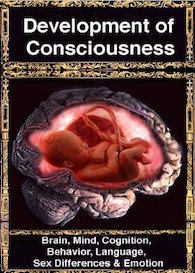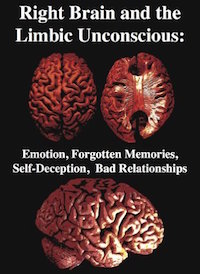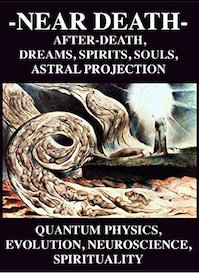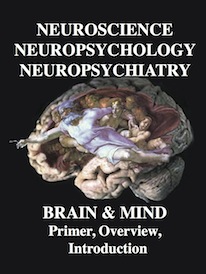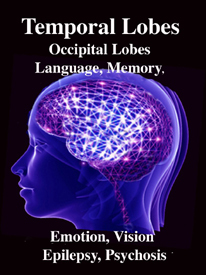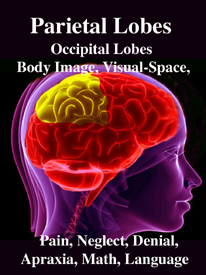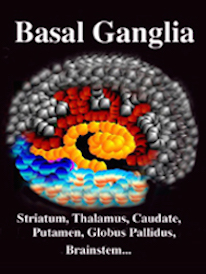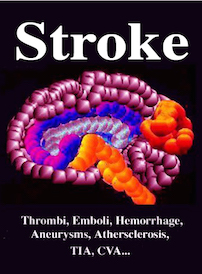Dancing: The Languages of the Body in Motion (Reprinted from: The Naked Neuron Plenum Press, New York, 1993)
Rhawn Gabriel Joseph, Ph.D.
DANCING
THE LANGUAGES OF THE BODY IN MOTION
Men and women dance for joy, in triumph and victory, when overcome by passion and eros, to appease the gods, and for the sake of art. Dance can be for ourselves, or for others, and may serve as an emotional release, or as a means of imparting joy, love, and pathos. Dance is an art and a form of communication, for it can well symbolize not only emotion and intent, but a fire burning, swirling smoke, a babbling brook, a bird in flight or aesthetic motion for art's sake 1.
Among ancient and primitive human beings, the first dances may not have served such lofty designs. Instead the dance of early man and woman may have been a means of pure uninhibited emotional expression and sexuality, sometimes spontaneous, sometimes as part of a ritual release 2. In fact, the recreational dancing of modern day "rock and rollers," or the frenzied religious writhings of Believers in the throws of mystical passion and ardor, is probably in many ways no different from that of our dancing ancestors who roamed the planet a million years ago. The first true "rockers" and "whirling dervishes" no doubt first danced their passions a long time ago.
Among humans the round dance, later known as the "magic circle" is probably the oldest form of group dancing 7.
Formal dance among modern day, westernized humans also seems to fall within three broad categories. This include classical ballet which first appeared around the mid 17th century, modern dance as typified by Martha Graham and Isadora Duncan, and new modern dance as exemplified by Paul Taylor and others 8.
Although modern dance has been for some odd reason labeled as such, it is in fact one of the oldest of all forms of dance. Isadora Duncan passionately argued that modern dance was an attempt "to recover the natural cadence of human movements which have been lost for centuries..." so that "...the harmonious expression of our spiritual being" is made possible 8. However, to accomplish this requires that movements become free, unrestricted and natural, similar to "the movements of the savage who lived in freedom in constant touch with Nature."9
Be it modern, ballet, rock and roll, or the "round" dance performed by our ancient ancestors, dance is an expression and a sometimes purposeful attempt to convey to others feelings, thoughts, ideas, hopes, desires, and even the most seemingly intangible of emotional experience 10. Dance among insect and human is a subtle and complex language and can be employed to artfully convey even that which cannot, or should not be put into spoken words. Two dancing strangers, a young man and woman may contort wildly together with licentious abandon conveying volumes of indecent thoughts and desires that they would never dare put into words until weeks into a relationship if at all.

MOVEMENT AS LANGUAGE
Human dancing serves as a means of imparting movement based information. In this regard, human dance movements, like those of the honey bee, could again be considered to fall within three broad categories. Narrative movement which involves the unfolding and telling of a story. Depictive and expressive movement which involves the portrayal of mood, nature, and feeling. And nonthematic movements (e.g. pirouettes, glissades) which may be used for spacing and in which no particular theme is meant to be communicated 11. Of course, be it classical, modern, new modern, or even rock and roll, all three forms of movement may be found, even within a single dance.
The point is, like the dance of the honey bee, human dancing too can be a form of language which is expressed via movement. Through movement feelings of tenderness, astonishment, and compassion, can be indicated, and narrative symbolism can be employed. Through depictive and expressive movements, particular aspects of the world can be portrayed, such as a wisp of smoke, a soaring eagle, the undulations of water, the wind blowing through the trees 12.
"DIRTY DANCING"
Humans are not the only species to dance. Bees, birds, monkeys and apes engage in dancing displays 14. As based on paintings left in ancient and forgotten caves some 15-25,000 years ago, it is also apparent that our human ancestors, like our ape-like cousins, were dancers as well. Among ancient humans it is likely that dances sometimes may have served purposes related to the procurement of food. However, with the exception of the busy bee, among all other animals who dance, including humans, the procurement of a mate is a major driving stimulus to dance. For example, male egrets dance before a potential partner to indicate sexual interest and if she is agreeable, they dance together. Even the common male sparrow puts considerable effort into dancing for his lady love, and sometimes two or more males may dance simultaneously, competing to win her affection.
Humans dance for a variety of reasons, such as the success of a hunt or the vanquishing of an enemy. Still the sexuality of many forms of human dancing is undeniable. Perhaps, this is why the Catholic church and other Christian sects expended so much effort trying to stamp out dancing in the fourth century and again during the middle ages; an effort that was doubly resumed in the 13th century due to the outbreak of dance epidemics and the spread of dancing diseases which sometimes caused the afflicted to flock dancingly to various religious shrines so as to obtain relief 15.
Interestingly, these dance epidemics are thought to be the result of widespread ergot infections that damaged portions of the basal ganglia in those who ingested contaminated bread. The writhing movements associated with disorders of this ancient motor center are referred to as Saint Vitus dance.
APOLLO & DIONYSUS
For the ancient Greeks, as voiced by Plato, dance too was thought to be of extreme importance as a formative instructive element in education and which contributed to one's becoming a good citizen. Athenaeus claimed during the 3rd century AD, that certain forms of dance instruction made men into better soldiers. This warlike dancing today would be recognized as marching.
Although, the ancient Greeks classified dance as one of four types, they essentially viewed the dance as belonging to one of two categories, only one of which was acceptable. According to Plato, only "noble dancing," or what Nietzsche called Apollonian dancing, was to be allowed, and anything suggestive of a "Bacchic Nature" or a of Lascivious character was unfit for good citizens to observe. This would include fertility dances, war dances, rain dances, sun dances, and all forms of orgiastic dancing. Anything of a Dionysian spirit including ancient dances performed since before the time of Babylon were deemed base. Plato referred to this latter type of dancing as primitive and sexual and not worthy of being considered art.
In contrast, the dancing of Apollo represents the mind, ideas and thoughts, and reveals our presumably "higher" and more "noble" nature as expressed through movement. It was this form of movement that Plato valued most highly and as expressive of that which is most lofty.
And yet, as a communicative device, dancing can hide and deceive as well as reveal, and movement can be restrictive and act to limit and conceal. Nietzsche, Isadora Duncan, and many modern dance enthusiasts, have decried the type of dancing which Plato cherished so dearly and instead have argued that it is only the most "Dionysian," natural, uncontrolled, unfettered, forms of movement which are the most revealing and the most meaningful.
According to Nietzsche, when engaged in this type of dance one is in a frenzy of melody and is able to "tear asunder the veil of Maya, to sink back into the original oneness of nature; the desire to express the very essence of nature symbolically."
Similarly, Isadora Duncan repeatedly decried such restrictions as styfling not only dance, but consciousness and creative thought. For her dance should only be of free and natural movements which are closer to our original nature and best reflective of the upwellings of our soul.
"The movement of the free animals and birds remains always in correspondence to their nature, the necessities and wants of that nature, and its correspondence to the earth nature. It is only when you put free animals under false restrictions that they lose the power of moving in harmony with nature, and adopt a movement expressive of the restrictions placed about them. So it has been with civilized man." 22
DRINKING & DANCING
Although the cultural elite of ancient Greece or the guardians of todays public morals might disagree, some might ask, what is dancing without refreshments such as alcohol so as to liven things up even more? Among humans, dancing is often accompanied by drink, and the imbibing of alcohol was a central feature of the Dionysian movement. Indeed, Dionysus was also the God of the vine.
Humans are not the only ones to partake of the pleasure and misery of alcohol. Some dancing bees, such as northern bees who have migrated or been transplanted below the equator, not only imbibe, they get drunk, a consequence of their feeding on fermenting nectar which they quickly metabolize.
Unfortunately, like humans, when bees get drunk this not only disrupts their foraging and dancing, but can result in accidents and even death. They crash into trees, get lost, and when they return to the hive they are usually turned away due to their altered social behavior. Those that are allowed back into the hive while drunk, pass on drunken messages. Moreover, those that survive generally appear to suffer a very debilitating hangover.
DANCES OF POWER
Dancing may well have appeared on the human scene long before any other type of expressive art and, along with singing, must have been one of the first and earliest pleasures. Dancing no doubt evolved from spontaneous expressions of emotion so as to eventually encompass and convey mystical and magical ideas, which in turn became ritualistic and religious in content and symbolism. All along, however, dance has served as a means of expression, information exchange and a form of potential entertainment for others to observe. Among our ancient ancestors, however, dance was probably also recognized as a form of potential power.
The world of the ancient human was filled with power; the power of nature, of animals, of fear, death, hunger, thirst, and sexual desire. The powers of the unseen however, were the most awesome of them all. The unseen, the unknown, of course had no form and thus could not be objectively represented, not even by name even after complex spoken language had been invented. However, the forces contained within and one's feelings regarding such powers could be displayed and communicated in the abstract, and this was accomplished through movement and dance 24.
If one can create an image of the nameless and of that which has no form then one's potential power over these forces is increased. They are now subject to one's potential control. When that image can be created in the mind of another, this is power that can be utilized to control other human beings as well.
When humans were first observed to dance, those who watched as well as those who participated were probably infected with similar feelings, fears, hopes and desires. In this way, even long after words and speech had been invented dancing assumed a magical and mystical quality as it became a powerful means of communication.
An ancient Cro-Magnon might think it magic if one were to write down something secret he had said, and then passing it to someone who could read, had it read aloud. Dancing would be viewed with just as much awe and excitement and its power enhanced even further by the frenzied participation of other tribe members. Not only thoughts and desires could be transmitted by dancing, but the feelings, hopes, and fears of others could be altered and possibly controlled. People felt compelled to dance and participate and the effects of which were always potentially hypnotic and even narcotic.
It was possibly in this manner that dance evolved into a medium involved in religion and magic ceremonies as its power was seen as being able to influence the thoughts, feeling and actions of those who observed and who felt desirous or compelled to participate. However, if it could affect the dancers and the audience, could it also affect the outcome of events or effect the lives and future of individuals or animals the dancers depicted? Certainly such thoughts must have occurred to our ancient ancestors. In this way, dance was probably seen as exerting an influence on the world itself. Humans mimic their environment through movement and sound and one of their earliest pleasures may well have been the mimicry of animals through song and dance. Humans would dance like a tiger or a bear, wear animals heads and skins, and did so so as to not only identify with nature, but to exert some controlling influences over their environment. One could dance out the hunt, the slaying of prey, or the ensuing victory over a foe. By dancing ancient man was able to exert control over the world and the outcome of all important events.
THE DANCE OF THE GODS
According to Curt Sachs, in his World history of Dance , the oldest dance is that of the circle dance. Human beings would form a circle and dance round and round and soon become enveloped in a frenzy of emotional, mystical, and spiritual excitement (feelings mediated by the amygdala and temporal lobe). This has been referred to as the "magic circle."
The circle, thought divine by many ancient societies, was seen as magical as it is the embodiment of perfection and symmetry and is thus in harmony with the universe. The sun is round, the moon is round, and the earliest forms of magic are the circle. Hence, the circle dances were probably also danced to alter events, increase or give thanks for success of the hunt, and so on.
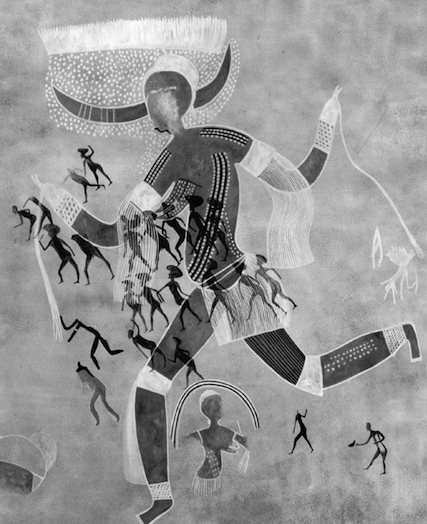
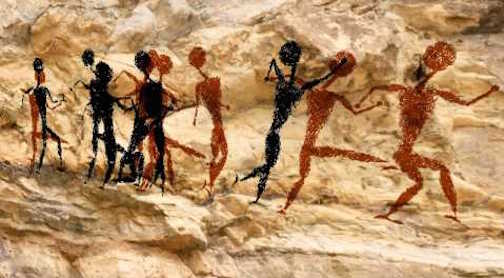
Thus dance over eons of time evolved beyond limbic sex and wild emotional abandon to encompass the mystical, magical, and spiritual worlds including those of the Gods and loved one's long dead. Soon, shamans, witch doctors, magicians, medicine women and men evolved and performed their dances so as to effect the audience and the unseen 26.
Indeed, dancing continues to play a significant role in the rites of many modern religions. Japanese Shinto religious dances are performed for the enjoyment of ancestors and as a means of making contact with their god. The whirling Dervishes, a religious Muslim sect, use dance ecstasy as a major element in their religious worship. So to do some Hassidim Jewish sects in which they dance in order to increase their contact with the mystical powers of god. Dancing also plays a major role in Hindu religious practices as even the Gods are known to dance.
DANCE OF ART
Magical dances and those involved in fertility rites, are not meant as a form of individual emotional expression but usually serve a particular purpose benefiting the tribe. In this regard they become ritualized and are performed in the same manner with certain proscribed and prohibited movements. Many forms of dance are in fact ritualized, including, ballet and even rock and roll. In contrast, those forms of dance which attempt to defy ritualized constraints, instead rely on natural movements and gestures which in turn are sometimes the most pregnant with individual meaning. These movements are under the auspices of the basal ganglia, which, like the limbic system, provide emotional coloring and meaning to movements. Indeed, it is via the amygdala that even spiritual feelings of the mystical come to be generated.
As dancing evolved from purely emotional to ritualized it gained in its potential power to influence and communicate beyond the natural and innate. In the evolutionary process it also became art. However, it is quite possible that dance preceded not only the more formalized means of communicating such as through spoken and written language but the development of the plastic and representational arts as well. Long before the development of visual art, dancing had already become an art as well as a later subject of ancient as well as modern artists. Hence, we find that in the earliest depictions of art in the recesses of ancient caves and beneath ancient cliffs, that Cro-Magnon man painted his fellows and the women in the act of dancing.
Be it the expression of emotion, magic, art, spirit, or soul, dancing thus represents an important form of intellectual activity. Indeed, be it modern human or dancing bee, dance is not only a language, for it speaks of the past and the future and time and space and that which is ineffable.
THE LANGUAGE OF MOVEMENT
Dance is language through motion and is a language of movement. Through dance a panoply of meanings and events can be conveyed and displayed. Dance accomplishes this in part, by utilizing natural movements and gestures to convey that which needs not words in order to be understood. These movements, insofar as they are unconscious yet meaningful, are under the auspices of the limbic system and the limbic portion of the old cortical motor center, the basal ganglia.
Unfortunately, among modern day humans, many of these signals are seldom attended to and many of these movements are suppressed, hindered by clothing, and in the process of "growing up" are forgotten or greatly modified by the neocortex. Still, even when not dancing, the movement of the body speaks volumes.
Communication through movement preceded the development of language and thought as is evident from studying the language of bees. From an evolutionary perspective, regardless of species, it has always been through observation or the detection of movement that one is able to make a multitude of judgments regarding the motivation and intent of those who are moving such as a stalking predator about to strike.
Movement, in fact is a main source of communication for modern human beings and is the earliest and most primitive as well as the most advanced form of communication. Even spoken language is based on movement and gesture. That is, in order to speak, words must be formed, articulated and expressed via a complex synergy of movement involving not only the lips, larynx, lungs, and tongue, but via complex programming which takes place in the cerebellum, basal ganglia, and motor neocortex of the brain.
Human dance, language and movement, is of course, much more complex than that of the bee and involves a considerable degree of flexibility and maneuverability a bee is not capable of. Complex movement and complex communication are linked.
One need only compare the dance maps of von Fritch and his honey bees, and Laban's "icosahedron," a spatial map of all potential human movements, to see this most dramatically. The "icosahedron," is basically a geometric, spatial map which indicates all the points of orientation in space including the dynamic tensions arising between different movements oriented in different directions 28. Via this scale, which also takes into account the force of gravity, any and all of the potential movements that can be made by woman or man can be identified.
Based on this geometric analysis of movement in space, Laban was able to develop what he called a "vocabulary of movement," and established a system of movement notation called Labanotation (or kinetography). Labanotation allows for the precise recording of all aspects of three dimensional movement including its timing, continuity, and extension in space.
Given the multiplicity of potential human movement, perhaps it is no surprise, that in comparison to bees, humans are able to symbolize, abstract, and represent that which has no representation. This is because with increases in the ability to make complex movements, the ability to communicate complex messages increases as well. However, to accomplish this required that the hands and limbs become adapted for purposes other than walking, wing flapping, or holding on for dear life.
In fact, as the evolution of complex movement preceded the development of spoken language certain movements are able to effectively communicate and express some forms of information that cannot be handled well by spoken language. For instance it is much more effective to describe a "spiral" by gesture than by spoken words.
Gestures can be executed more rapidly than speech, and can convey concepts that are quite cumbersome to describe verbally. Indeed, it has been estimated that the human hand is 20,000 times more versatile than the mouth in producing comprehensible gestures.
Nevertheless, human beings have grown accustomed to listening to spoken language and paying less attention to these movement based cues. Although potentially linguistically complex, due to the imposition of civilization and formal learning, movement as a means of communication has become diminished, more repetitive in nature, and quite restricted. Clothing restricts movement as do social expectations. For Isadora Duncan, movement is most communicative and spiritual when it is most natural and unhindered by clothing. However, when movement is restricted, so to is human consciousness. She lamented:
"Very little is known in our day of the magic which resides in movement, and the potency of certain gestures. The number of physical movements that most people make through life is extremely limited. Having stifled and disciplined their movements in the first stages of childhood, they resort to a set of habits seldom varied. So too, their mental activities respond to set formulas, often repeated. With this repetition of physical and mental movements, they limit their expression until they become like actors who each night play the same role." 28.
DANCING ON THE RIGHT SIDE OF YOUR BRAIN
As noted, dance is emotional, spiritual and religious, and intellectually attuned. In many ways, dance as a language parallels certain aspects of emotional functioning associated with the limbic system and the right half of the brain. As noted, even with severe left cerebral injuries the right half of the brain is still able to swear and utter religious oaths, and it is the limbic, amygdala-basal ganglia association which not only produces them but can infuse them with religious and mystical awe as well as generate narcotic mystical states via the secreation of opiate neurotransmitters, the enkephalins.
Are there other links as well between the limbic system and the right half of the brain and dancing? Yes. But not all forms of dancing are mediated by these regions of the brain. Like music, the left brain contributes as well, particularly where the rhythmic, temporal-sequential aspects of movement are exaggerated or pronounced, the most extreme of which is marching.
DANCING AND GEOMETRIC SPACE
Neuroscientists and neurologists know that the ability to control and direct fine motor skills is under the auspicious of the motor cortex and the left half of the brain in the majority of the population. This is also demonstrated via hand preference as in the right hand being controlled by the left half of the brain.
In contrast, the right brain exerts controlling guidance over the trunk and lower extremities so that successful movement of the whole body in space is made possible. For example, the capacity to guide movements in space and to take into consideration factors such as gravity, distance, depth, and so on, so that one does not trip and fall, is dominated by the right half of the cerebrum. This includes the perception of direction, shape, orientation, position, perspective, and figure-ground, the detection of complex and hidden figures, route finding, maze learning, as well as locating targets in space 29. The determination of the directional orientation of the body as well as the positional relationships of different body parts is also under the dominant domain of the right half of the brain.
It is the right hemisphere which enables us to find our way in space without getting lost, to walk and run without tripping and falling, to throw and catch a football with accuracy, to drive a car without bumping into things, to draw conclusions based on partial information, and to see the forest when looking at the trees. If not for a right brain, a dancer could not dance as it is this half of the cerebrum which makes it possible for us to run, skip, jump, leap, throw, hit, and to catch a football tossed long and wide via the analysis of body-visual-spatial relations 30. If the right half of the brain were injured, distance and depth perception would be altered, half of the body image may be erased, and our ability to maneuver our body about in space would be compromised. There would be no more dancing.
Among humans, it may well be the right half of the brain, coupled with limbic influences and that of the basal ganglia which provides and extracts emotional meaning from movement. However, over the course of human evolution, neuronal organization has become more complex and new brain structures have evolved that have made possible the translation of movement into meaningful gestures and then finally, into complex human speech. In fact, it appears that the development of complex gesturing was a precursor to the development of spoken language, and that, conversely, spoken language required that movement be modified and imposed on sounds. However, before the first word, there was the sign, and the sign still accompanies and gives meaning to the spoken word, even when nothing has been said.
